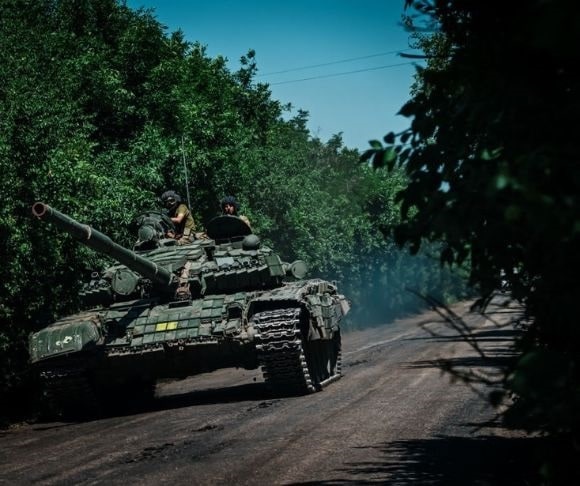
(Marcus Yam / Los Angeles Times via Getty Images)
As the battle for the Donbas region of Ukraine rages, new reports are coming in that two American military veterans have been captured by Russian forces. The two volunteers were there to help the beleaguered Kyiv regular military. Though the US State Department refers to the reports as unconfirmed, sources in Ukraine have identified the former US servicemen as Alexander Drueke, 39, and Andy Huynh, 27, both residents of Alabama.
Details emerging on the two Americans give more substance to the reports than the State Department’s “unconfirmed” characterization. In a press statement, a spokesperson from Foggy Bottom confirmed only that the State Department was monitoring the situation. Joseph Clark writing for The Washington Times, explained Moscow’s view of non-Ukrainians joining the war:
“The Kremlin has warned against the West continuing to arm Ukraine, and the Russian Defense Ministry has announced that foreign fighters detained on the battlefield will not be considered combatants, removing certain protections afforded to prisoners of war and potentially exposing them to criminal prosecution in Russia.”
 A New York Post report of the capture explained both Drueke and Huynh “…were taken prisoner during a fierce fight with Russian armor during the ongoing Ukrainian counterattacks in the nation’s northeast…The Americans were captured after their 10-man squad ran in to a much larger Russian force in a village outside Kharkiv,” A retelling of the fighting by an unidentified source attributed the capture to inaccurate intelligence that had not anticipated an encounter with tanks, armored personnel carriers, and approximately 100 dismounted infantry troops. Drueke and Huynh “got off at least one shot at a Russian vehicle, destroying it with a rocket-propelled grenade before their capture,” according to the New York Post account.
A New York Post report of the capture explained both Drueke and Huynh “…were taken prisoner during a fierce fight with Russian armor during the ongoing Ukrainian counterattacks in the nation’s northeast…The Americans were captured after their 10-man squad ran in to a much larger Russian force in a village outside Kharkiv,” A retelling of the fighting by an unidentified source attributed the capture to inaccurate intelligence that had not anticipated an encounter with tanks, armored personnel carriers, and approximately 100 dismounted infantry troops. Drueke and Huynh “got off at least one shot at a Russian vehicle, destroying it with a rocket-propelled grenade before their capture,” according to the New York Post account.
On June 15, the State Department told Fox News it was in touch and coordinating with the appropriate Ukraine government authorities to stay abreast of any new developments: “The spokesman reiterated that the US strongly advises against traveling to Ukraine at this time.” But the urge to come to the aid of the Ukrainian military and armed civilians tormented by a larger and more powerful Russian bully is, for some, a strong one. Huynh traveled from his home to Ukraine in April at his own expense, approximately $6,000. The last his family heard from him was on June 8, when he told his fiancée, Joy Black, that he would not be reachable for a “few days.”
Drueke, who served in Iraq, suffered from PTSD and was struggling to hold down a job, according to his mother. For some, serving in combat zones exposes them to a highly charged environment creating an adrenaline rush which is difficult to give up after returning home.

It’s an oxymoron in many respects. On the one hand, your life is in constant jeopardy with the attending intense fear, while the extreme hostility of mortal combat accentuates a sense of meaning, purpose and self-worth. Add to that the fierce sense of camaraderie generated among soldiers in conflict, and the appeal to join the struggle in Ukraine is understandable. It was to be expected. Americans should not be surprised when the ethos of service, duty, sacrifice, and helping the underdog the US military instills in its service members prompts them to seek out opportunities to demonstrate those qualities.
The battle for Ukraine is an example of the worst of “man’s inhumanity to man,” Robert Burns’ phrase appropriately framing the barbarity and pitiless cruelty exacted by the Russians against the Kyiv government and its people. The flow of foreign volunteers, including US citizens, to fight alongside the Ukrainian military is reminiscent of the 2,800 Americans who rallied to fight in the 1936 Spanish Civil War against General Francisco Franco. Drueke and Huynh went to Ukraine to do what each thought to be right, knowing there could be dire consequences. They will not be the last.
The views expressed are those of the author and not of any other affiliation.
Remember to check out the web’s best conservative news aggregator
Whatfinger.com — the #1 Alternative to the Drudge

